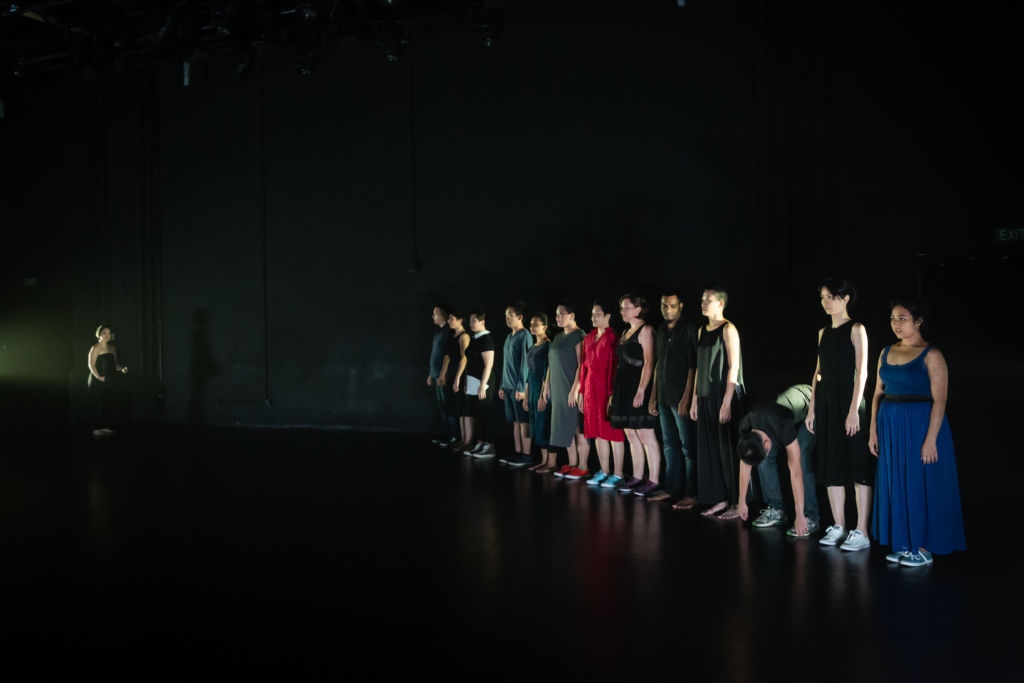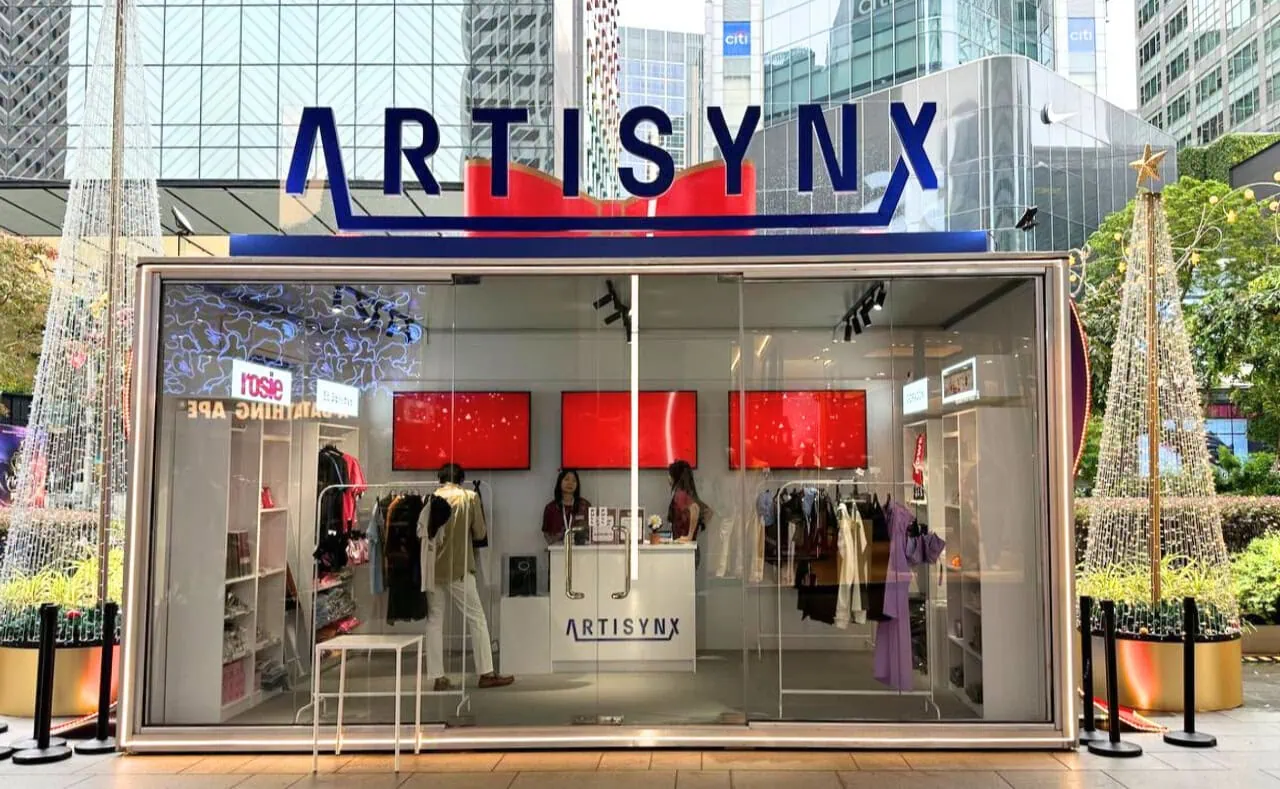By Sherlyn Goh Xue Ting
Intercultural Theatre Institute (ITI) lives up to its name once again in its inventive take on Thornton Wilder’s Our Town, transforming it into a multilingual and multicultural production. Directed by Kok Heng Leun, Artistic Director of Drama Box and Nominated Member of Parliament, in his first solo directorial work since 2015, Our Town explores the everyday life of residents of a fictional American town set in the early 1900s.
The production shattered my expectations of what the staging of a highly Americanised, almost 80-year-old play in Singapore might look like, and I left the theatre pleasantly surprised by the unexpected ways in which it was adapted and localised for a modern audience.

The play opens with the characters sitting in a line, facing the audience, as they share about the history of Grovers Corners, a small town in New Hampshire, and its residents. Interestingly, while the characters seem to address the audience directly, they never physically face one another in Act 1, even when interacting among themselves – the milkman and doctor greet each other while speaking into empty space, and the organist instructs his choir with their backs turned to him – hinting at the distance between the town’s residents, a motif that intensifies throughout the performance.
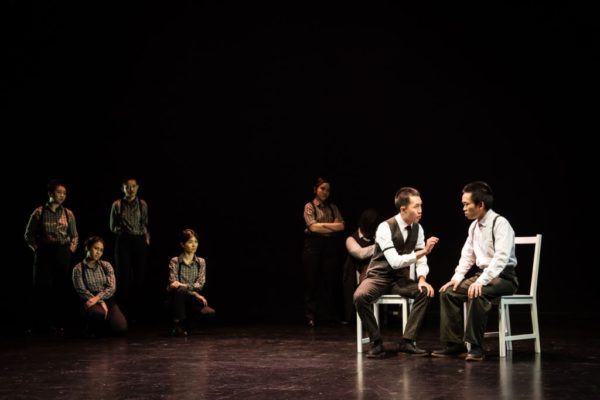
Act 2 brings this distance out more explicitly; the actors abruptly switch to converse in their respective mother tongues. The result is jarring but incredibly beautiful. While segments of the audience are inevitably left out of the loop when each language is spoken, the characters speak so much more animatedly, confidently, and smoothly without missing a beat, almost as though they completely understood each other’s languages, exemplified especially in the interaction between Emily (Uma Katju) and George (Desmond Soh). Speaking entirely in their own mother tongues, they confess their love and discuss their future plans. Katju’s and Soh’s natural chemistry seems to suggest that the love between Emily and George might just overcome the looming distance and separation that the play constantly refers to, and this culminates in their wedding at the end of Act 2.
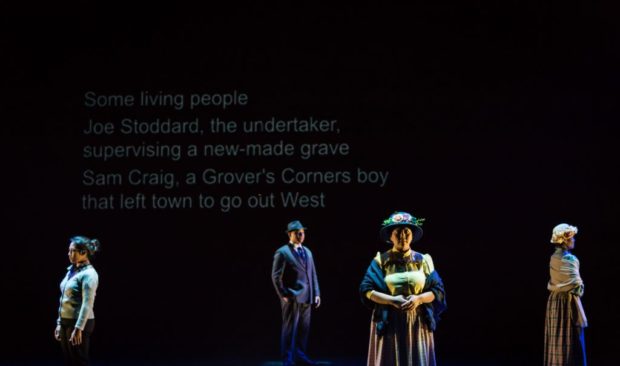
Loss and separation are brought to the forefront in Act 3, which takes a darker turn and transports the audience to a metaphysical, surrealist setting of a cemetery, nine years after the wedding. The characters on stage are those who have since passed away, and they’ve transitioned from dancing in pairs during the wedding, to dancing alone. Emily, who died during childbirth, longs to return to her past – “Mama, I’m here,” she cries, as she frantically claws at a projection of her mother (Mathilde Bagein) on a physical screen that separates mother and child, life and death. This sense of isolation is an undercurrent that runs throughout the play, and is echoed by Emily, who refers to the residents of Grovers Corners when she asks, “They’re sort of shut up in little boxes, aren’t they?”
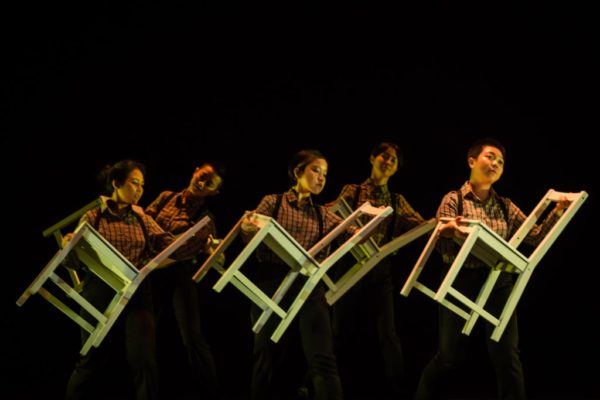
While Wilder was known to have employed metatheatrical devices, Kok takes this to a new level in the final act, which draws attention to the process of rehearsing and staging Our Town. The cast re-enacts a drama exercise, rushing to the wings to change out of their costumes and into their personal clothing, while running back on stage to adopt a tableau when various numbers are called.
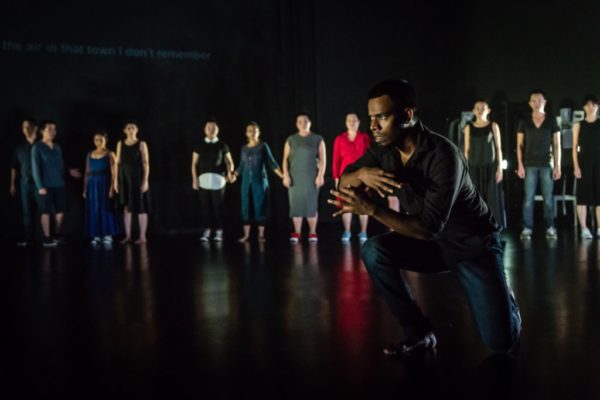
Back in their everyday clothing, the actors assume their individuality, and take turns to perform highly personalised physical theatre sequences, at times contorting their bodies into visually arresting formations. Choreographed by Koh Wan Ching, these sequences could be read as interpretative representations of each actor’s own experiences or struggles, as they occasionally seem to coincide with the content of the text projected on the screen behind them, from forgetting how ahma looks like or how to speak Hindi anymore, to the rampant rage of a mother or harbouring suicidal thoughts in primary school.
Time and again, the fourth wall is broken, as there are other hints suggesting that the actors have attempted to draw personal meaning from a text that might be difficult to relate to. For example, in Act Two, the screens at the front of the stage play slideshows of what appears to be words describing the actors’ struggles and unseen problems in their respective towns, ranging from financial difficulties to the lack of toilets for people with disabilities.
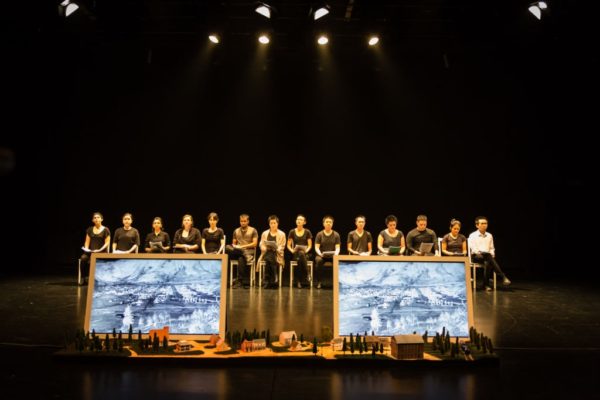
This Brechtian nature of Our Town resonates strongly across every production element. Actors announce the start and end of each act, and occasionally interrupt conversations with narration, such as “a train whistle is heard.” We see this in Act One too, where actors appear on stage in black clothing and read their scripts, as though they were still in rehearsal. Notably, there is no backstage; when actors are not involved in certain scenes, they stay at the wings and change costumes in full view of the audience.
Staying true to its original staging, Our Town is performed on an almost bare stage. The minimalist set design lends more weight to the performance of ITI’s graduating students, who skilfully transport the audience to the radically different setting of Grovers Corners, buoyed primarily by their acting. This is aided by era-specific costumes by Max Tan and Yuan Zhiying of MAX.TAN, and multimedia such as the text projections at the back of the stage and Jasmine Ng’s video design on the two screens at the front. In one moment, the camera pans through Chan Silei’s miniature model of the town, inviting the audience to peek into the everyday lives of the town’s residents, while the ominous negative images of the town and its people at the start of the play foreshadows the tragedy we see in Act Three.
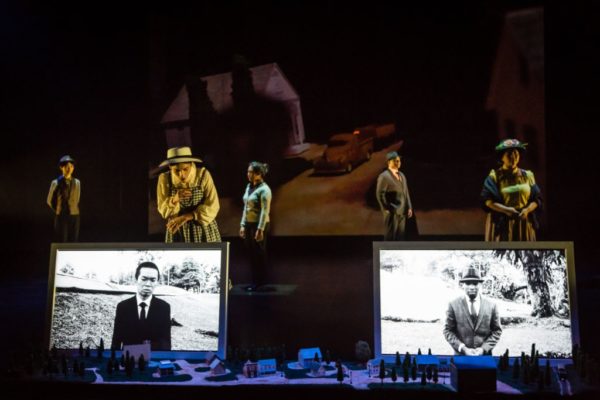
Kok’s and ITI’s Our Town is a refreshing, multicultural take on a classic small town American play, effectively connecting the contemporary to the traditional. The cast took several risks and pushed boundaries in this final performance of ITI’s graduating cohort, be it through their metatheatrical final act, or the use of different mother tongues. While this seems to have left a few audience members restless (at least on the night of my attendance), I found it brilliantly inventive, and appreciated the glimpse into the staging process, particularly the references to the actors’ personal experiences. Looking ahead, I’m excited to see what this talented batch of actors will have in store for us as they embark on the next stage of their careers.
For more information on ITI, check out this link and read more about their previous production Leakage(s) And Anticoagulants.
Photography credit: Bernie Ng
==
Stay updated and social with Popspoken: Facebook | Twitter | Instagram


